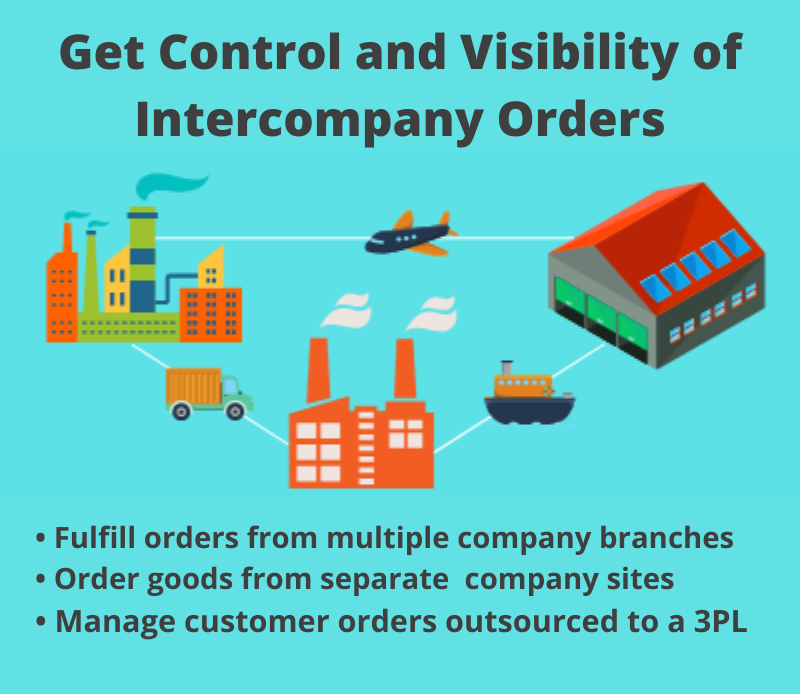
by Olena Stepovyk
Manufacturers are in flux these days. Production planners and schedulers are in the thick of it.
Supply chain disruptions have hit hard, and manufacturers are employing strategies to mitigate their effects.
Companies are increasing inventory levels and improving communications with customers and suppliers. They are adding warehouse space and scrambling to ensure proper management. They are distinguishing between demand- and forecast-driven manufacturing. They are extending planning horizons to identify required raw materials inventory and manufacturing resources ahead of time.
Production planners are the front-line workers dealing with these challenges day in and day out. They need to maintain a feasible production schedule and be able to respond quickly to the chaos around them every day.
To help you cut through the chaos, here are the new features in our Production Planner and how they help you.
More easily identify the source of work order demand for faster review and approval
In QAD, customer demands are projected onto the manufacturing floor from sales orders and customer schedules.
You know the actual or “firm” demands for the next few weeks. However, with today’s increased purchasing lead times, you need longer planning horizons to ensure manufacturing resource availability. Here is where the sales forecast comes into play, giving you information about projected sales when firm customer demands are unavailable.
However, when there are existing or anticipated component shortages, you must prioritize between work orders issued to cover sales forecasts and those that cover “firm” demands (i.e., customer orders and safety stock replenishment).
You can use QAD MRP reports to review each order, identify its source and decide what action to take. However, reviewing MRP detail reports for each planned work order and identifying its source of demand can be time-consuming. It is still doable when the number of planned work orders to review is small, but as the number of items and work orders increases, the scheduling process can be unwieldy.
Production Planner identifies the source of work order demand during the download from QAD. That means you can see if demand comes from a sales order, forecast, stock, or another production order without going into the MRP report details for each item.
This new feature significantly speeds up reviewing and approving planned orders, helps you make better decisions, and take appropriate action.
More timely determination of partial shortages and maximum scheduled quantities
Production Planner allows you to identify the number of short components for a work order and the total percentage of work order quantity that can be scheduled.
For example, let’s say you don’t have enough components to cover the total quantity scheduled. Production Planner shows you how much work order quantity can be scheduled. This means you don’t have to take the time to look into the detailed component availability and firm or scheduled work order quantities to see the percentage of the work order that can be covered by the available components.
This new feature saves time, particularly when you have many work orders, by quickly identifying partial shortages and maximum scheduled quantities.
Improved projected component availability calculation
Another significant change to Production Planner is the ability to include all open work orders in the component availability calculation.
All open work orders must be analyzed for component requirements to get the most accurate projected component availability. The more work orders that need to be analyzed and the larger the bill of materials for those work orders, the longer it will take to calculate the projected component availability for each work order.
Most schedulers concentrate on either a group of items or a group of production lines to speed up the scheduling process. However, when analyzing lists of work orders only, partially, or excluded open work orders and their component demands are not included in the component availability calculation, which can cause problems down the road.
The Production Planner identifies the component quantities allocated to ALL the open work orders and includes them in the resulting projected available quantity report. So, you can review only the new demands yet still see an accurate projection of components availability.
Better visibility of the inventory at distribution warehouses
Inventory quantity in QAD can have a status of available or not available. Projected component availability is calculated based on the available on-hand inventory. Usually, the regular warehouse locations have an available inventory status while Shop Floor locations have a non-available/non-nettable status. In preparation for the manufacturing process, components are often moved from the warehouse locations to the dedicated Shop Floor workstations, losing their available status in the process. Or, subassemblies might be backflushed to the locations with a non-available/non-nettable status.
Production Planner gives you the ability to see Shop Floor quantities enabling you to dismiss work order shortages that these quantities can offset.
In addition, Production Planner shows the available offsite quantity of components stored at another site. Since component requests from an offsite warehouse usually have a short lead time, you can firm work orders if components are available offsite in a sufficient quantity. MRP will notice those new work orders and automatically generate inter-site requests for the components.
Find out more about the Production Planner Data Loader here.
_______________________________________________________________________________________
Olena Stopvyk has more than 20 years of experience with QAD as a user, administrator, implementer, and architect. Her myriad knowledge and expertise allow her to combine her technical background with a complete understanding of manufacturing and financial business processes. Before joining 32 Soft as Solutions Architect, Olena was with Faurecia Automotive for 4 years and with Kraft Foods for 7 years, where she was an integral part of the QAD implementation team in Eastern Europe. You can reach Olena at os@32soft.com
We Also Recommend:
A Powerful Production Planner for Any ERP System (even Homegrown)
QAD Production Schedules Made Even Easier
Data Visualization & Your Production Schedule
A Better View of Production Needs & Schedules




